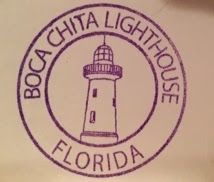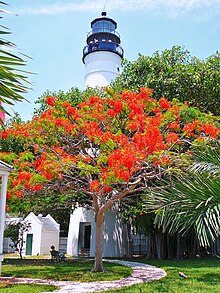Grabbed this this past summer on our way over to New York State and then Maine.
It was right on the waterfront, part of a big Maritime museum.
At the City of Erie, a peninsula, over six miles in length, arches
out into the water of Lake Erie forming an expansive natural harbor. French
explorers recognized the intrinsic value of the harbor and in 1753 constructed
Fort Presque Isle on the mainland near the harbor entrance. The name Presque
Isle means “almost an island” in French and referred to the nearby peninsula.
From Fort Presque Isle, fur traders could portage their goods fifteen miles to
Fort Le Boeuf, located at the upper reaches of the Allegheny River near
present-day Waterford, and then float downstream to Pittsburgh and on to
Louisiana. Fort Presque Isle and its portage thus became a vital link between
the French fur trade network in the Great Lakes and its colony on the Gulf
Coast.
Control of the Presque Isle region was wrested from the French in 1760 during
the French and Indian War, and following the Revolution, the area was
incorporated into the State of Pennsylvania in 1792. During the War of 1812, the
harbor at Presque Isle was used to construct six warships, including the Brig
Niagara, which played a role in Admiral Perry’s convincing victory over
the British in the historic Battle of Lake Erie.
The
first lighthouse at Erie, and indeed the first American lighthouse on the Great
Lakes, was constructed on a mainland bluff in 1818, not far from the site of
Fort Presque Isle. For decades, the commercial importance of Erie was directly
tied to shipping on the Great Lakes, which increased dramatically in 1824
following the completion of the Erie Canal connecting Buffalo to the Hudson
River. The success of New York’s canal prompted Pennsylvania to link
Philadelphia to Pittsburgh with a network of canals that opened in 1834. A
decade later, the Erie Extension Canal was completed, and Erie was once again a
vital link to cities along the Ohio and Mississippi Rivers.
In 1870,
plans were
begun for a lighthouse on the north shore of the Presque Isle Peninsula that
would replace Erie Land Lighthouse on the mainland. This new light would be
several miles nearer the lake, and being located directly on the peninsula,
would better mark that navigational hazard. Congress appropriated funds for its
construction on June 10, 1872, and proposals were solicited for the necessary
building materials. The lighthouse was originally going to be built of
limestone, but when this provided to be too costly, bricks were used instead.
Construction on the peninsula began in September of 1872, and the light from
atop the forty-foot tower attached to the keeper’s dwelling was first exhibited
on July 12, 1873. The hazard of landing material at the site was evidenced by
the loss of a scow carrying 6,000 bricks.
The walls of the lighthouse tower were built with five courses of brick in
order to withstand the fierce storms and buffeting winds that blow off the lake.
Though square on the outside, the tower is circular inside and supports a spiral
staircase, forged in Pittsburgh and barged to Erie. The brick keeper’s dwelling
originally had an oil room, bedroom, dining room, kitchen, and summer kitchen on
the main floor, and three bedrooms and a drying room on the second floor.
Beneath the dwelling were located a cistern and a cellar. The cost for the
lighthouse was $15,000.
Charles Waldo was the first keeper of the Presque Isle Lighthouse, earning an
annual salary of $520. On the day of the inaugural lighting, Keeper Waldo wrote,
“This is a new station and a light will be exhibited for the first time tonight
- there was one visitor.” Prior to sundown, Waldo would have lit the lantern
inside the tower’s Fresnel lens and then throughout the night returned to check
the oil level in the lamp. In 1882, the tower was equipped with a revolving
fourth-order Fresnel lens that alternately produced a red and white flash every
ten seconds. Before this, the tower exhibited a fixed white light punctuated
each minute by a red flash. As the other lighthouses at Erie displayed fixed
lights, the locals often called Presque Isle Lighthouse the “flash light.” The
old Erie Land Lighthouse was discontinued in 1880.
In 1876, Waldo’s wife, Mary, gave birth at the lighthouse to a baby girl, the
first child to be born on Presque Isle. During their seven-year stay at the
lighthouse, the Waldo family had an isolated existence, as the road to the
peninsula was not completed until 1927. In fact, Keeper Waldo referred to the
station as the loneliest place on earth. To reach civilization, the keepers and
their families would have to walk along a 1.5-mile pathway, part of which was
originally a boardwalk due to the marshy terrain it traversed, to reach the
station’s boathouse on Misery Bay. A lengthy row across the bay and another walk
were then required to reach the nearest school or store where provisions could
be obtained. The pathway was finally paved in 1925, which led to its being
called the “
sidewalk
trail.”
The Lighthouse Board
noted in 1886 that the shoreline in front of the lighthouse had receded thirty
feet during the previous two years. To curb this erosion, contractors built a
400-foot-long and 10-foot-wide jetty composed of stone-filled cribs during the
summer of 1886. The work was successful as five years later it was noted that
the beach had built up substantially on both sides of the jetty, which extended
perpendicular to the shoreline.
To increase the range of the light, the height of the tower was increased
seventeen feet, four inches in 1896 to produce a focal plane of seventy-three
feet. When kerosene was adopted as the fuel for the light in 1898, an oil house
was constructed near the northeast corner of the station to provide detached
storage for the volatile liquid. A year later, the extended tower was painted
white to provide a more prominent daymark for vessels on Lake Erie.
Andrew Shaw, Jr. became keeper of Presque Isle Lighthouse in 1901 and was
recognized multiple times by the Lighthouse Service for saving life and
property. In 1916, when the tug
Henry E. Gillen stranded on the bar at
the entrance to the harbor, Keeper Shaw summoned assistant and cared for
articles that washed ashore. Two years later, a yacht was driven ashore near the
station, and Keeper Shaw provided food, shelter, and clothing for its three
passengers. Keeper Shaw prevented a fire near the station from spreading in
1917, and in 1925 both he and the keeper of Presque Isle Pierhead Lighthouse
helped fight a fire that burned for several days on the peninsula.
In 1924, commercial electricity reached the lighthouse, and an
oil-engine-driven generator was installed at the station in case of power
failure. Presque Isle peninsula was set aside as a state park in 1921, and after
the road to the peninsula was completed in 1927, Keeper Shaw abruptly retired,
as too many visitors were attracted to the lighthouse. Frank Huntington took
over the responsibilities of keeper and served until 1944, after which enlisted
Coast Guard personnel tended the light. On January 8, 1928, Keeper Huntington,
his wife, and son rescued two boys who had fallen through the ice near the
station and were in danger of drowning. The Fresnel lens atop the tower was
replaced by a modern beacon in 1962.
Additions were made to the front and back of the dwelling in 1989 and 1990,
and in 1998 Presque Isle Lighthouse was officially transferred to the
Pennsylvania Department of Conservation and Natural Resources. The lighthouse is
currently used as a residence for park personnel. In 2006, the lighthouse was
opened for two days during Discover Presque Isle Weekend, and visitors waited in
line for more than two hours to climb the seventy-six steps to the top of the
tower. More than 750 people paid $2 to make the climb, and there was still a
lengthy line at closing time on the second day.
Keepers of the Erie Lights was formed in 2006 to gather information on Erie’s
three lighthouses and to help with their restoration and interpretation. From
2006 through 2009, the committee focused on Presque Isle Lighthouse, and a
Historic Structures Report on the lighthouse was published in June of 2007. The
report includes a history of the lighthouse and outlines a restoration plan that
includes replacing the dwelling’s roof, repointing the masonry, and restoring
the porch, oil house, and fence. The public can help the effort by purchasing a
Pennsylvania specialty license plate featuring an image of Presque Isle
Lighthouse.
































